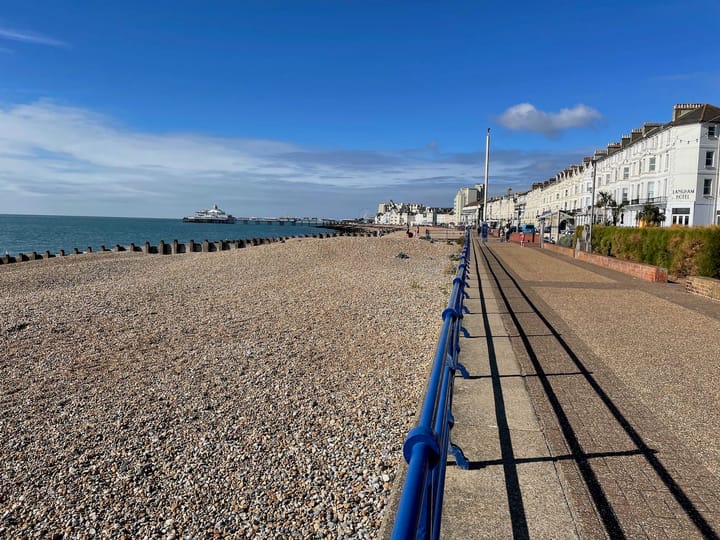Southern Water faces fury over smells, sewage and plastic bead pollution
Dozens attend Southern Water drop-in event demanding answers to odour and releases of sewage and plastic beads from its Eastbourne wastewater treatment works.
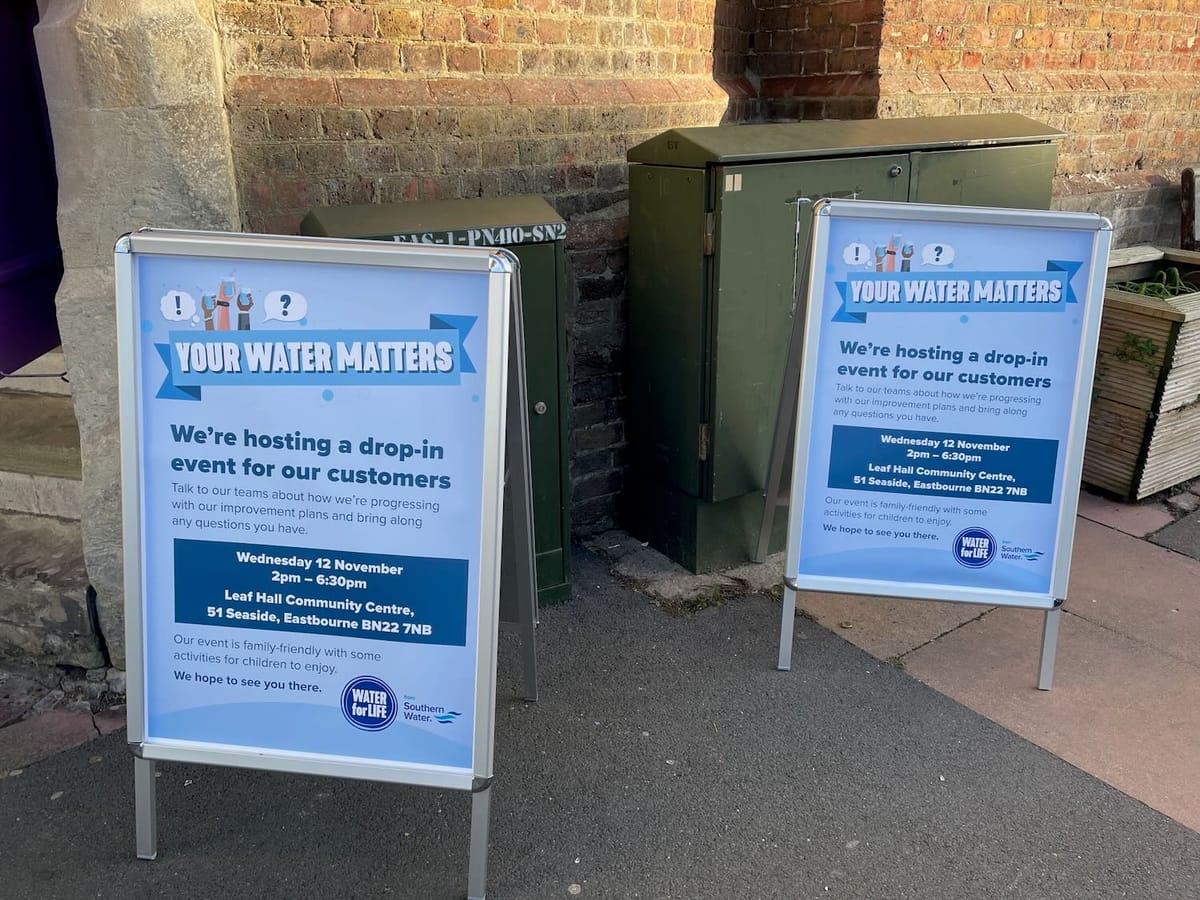
- Dozens attend Southern Water drop-in event demanding answers to odour and releases of sewage and plastic beads from its Eastbourne wastewater treatment works
- The company’s head of wastewater tells Eastbourne Reporter there will always be a smell next to a treatment works
- The Environment Secretary has said she is “appalled” by the pollution incident at Camber Sands caused by the release of a large number of plastic beads
By Rebecca Maer, Eastbourne Reporter
It wasn’t hard to spot the busiest part of Southern Water’s drop-in session for residents.
Tucked in a corner, with a few photos of the interior of the wastewater treatment works stuck to a wooden partition, were a couple of staff.
They were surrounded by irate people who wanted to ask about the smell from the works, sewage in the sea – and, of course, the leak of plastic beads from the water treatment works.
There was such a long queue, a staff member started to scribble numbers on bits of paper and give them out to people in an attempt to create order.

The session at Leaf Hall on Seaside, Eastbourne, yesterday (November 12) was organised some weeks ago.
Southern Water, which is responsible for wastewater collection and treatment, had about two dozen staff on hand. A room with staff from South East Water, which supplies the water which comes out our taps, was less busy.
What was the Southern Water drop-in about?
Southern Water had said it was a chance to answer questions “on a range of issues” including the treatment works but also “investment in the resilience of the network, nature-based solutions to reduce the number of storm overflow releases, what's being done to prevent blockages, pollutions and flooding in the area, work to find and fix illegal sewer connections that have caused pollutions”.
The company undoubtedly knew it would face residents wanting to ask about the long-running problems of odour from the treatment works at Langney Point.
It was also probably aware sea swimmers want to hold them to account for sewage releases after heavy rainfall.
But the event took place just days after news emerged that large numbers of plastic beads leaked from the works, causing a pollution incident on the wide beach of Camber Sands to the east.
Reaction to the plastic beads leak
Environment Secretary Emma Reynolds told MPs today she was “appalled” by the incident and that she was "holding Southern Water to account".
Eastbourne MP Josh Babarinde warned in the Commons of "catastrophic failures" by Southern Water, with a "stench stinking out" the town and the accidental discharge of plastic bio-beads.
The company has issued an apology for the incident.
What does Southern Water say about the plastic bead incident?
The beads are used to create a greater surface area for bacteria to cling to. When water volumes increased, pressure built and the top of the mesh split, allowing beads to escape, according to the company.
Eastbourne Reporter asked John Penicud, the company’s director of wastewater operations, how often the tanks containing these beads, which are part of the water-cleaning process, were checked.
He told us the tanks were inspected daily. He said an independent investigation had been launched.
Mr Penicud said of the mesh: “It’s inspected daily and was last replaced in 2019. It’s stainless steel and is in good condition. We need to understand the failure and what steps we need to put in from a design perspective to make sure it never happens again.”
What do residents say about the smell from the treatment works?
There were scathing verdicts from residents about how Southern Water has dealt with the long-running problem of smell.
One resident, who did not wish to be named, has lived near Pacific Drive since 2008. She said: “It has blighted our lives. You can’t hang washing on the line or have windows open. I could not go in my garden at all this summer.
“The chief executive should be made to rent a house nearby until it’s sorted and see exactly what it is like to live here.
“I just kept hoping it would get sorted. Then I saw about the pollution on Camber Sands and I thought, ‘I have got to be another voice’.
“I am absolutely disgusted. It is all blah, blah, blah. It has gradually got worse over the last two years – this year, it has been horrendous.”
Christine Earl lives in beachfront apartments across the road from the treatment works and described Southern Water as a “bad neighbour”.
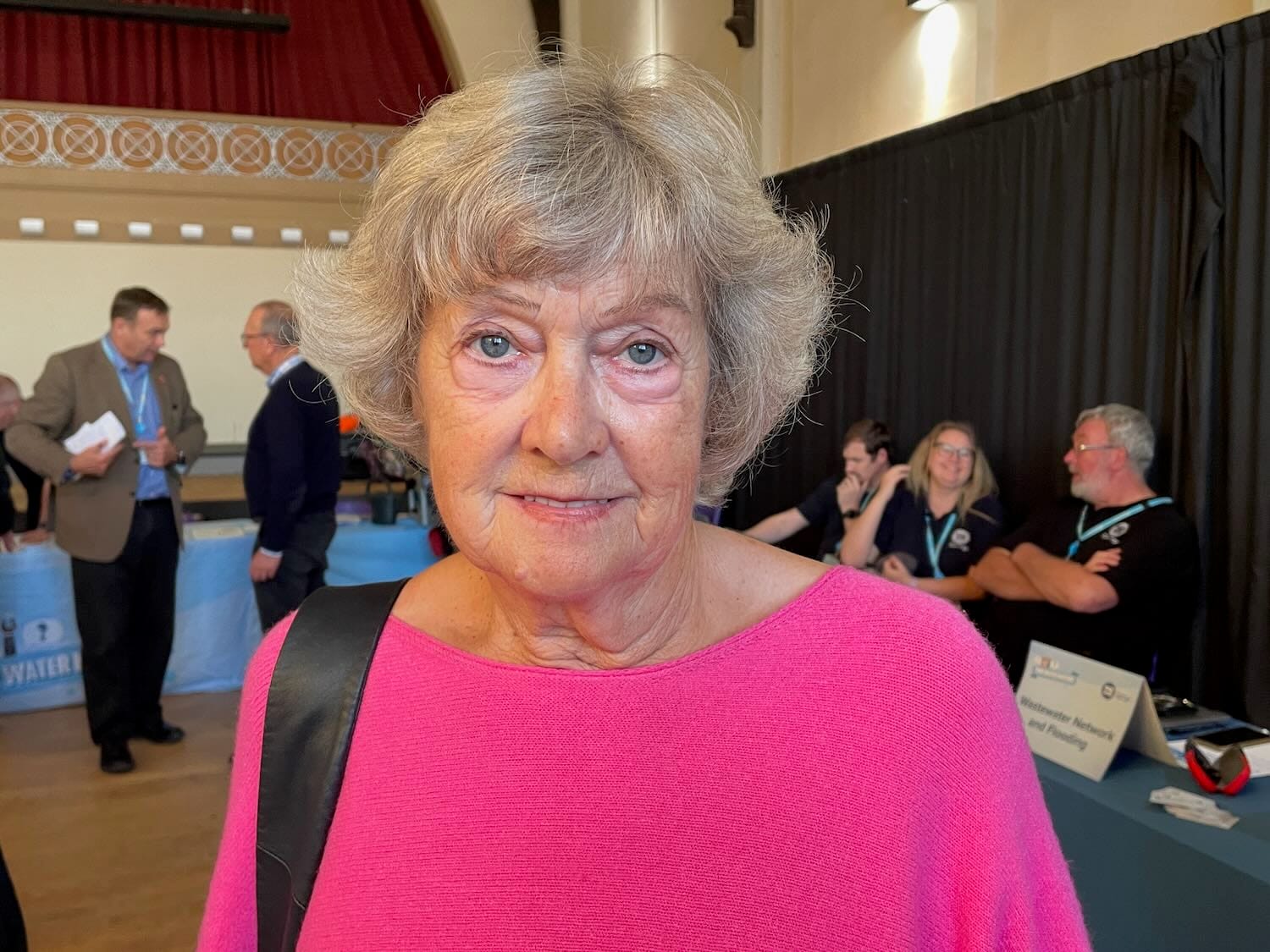
She said the odour remained intermittently and, due to work at the facility, spotlights were on all night, shining towards residents’ bedroom windows.
“They should be developing a new treatment works and finding somewhere else to put it.”
When will the smell stop?
Mr Penicud said that within the plant, there are three odour control units, with one designed to be on standby as a back-up. However, they are near the end of their life and there is a five-year programme to replace them.
Eastbourne Reporter asked: when will the smell stop?
Mr Penicud said: “You will always have a smell next to a wastewater treatment works. That’s why they are usually built out of town and in unpopulated areas.
“What we can do is use the best available technologies and invest to minimise it as much as possible.
“It would be wrong of me to promise to eliminate all the smells.”
What do the sea swimmers say?
Madeleine Gorman, of Pevensey Bay, is usually a regular sea swimmer. She has not swum for three weeks due to sewage outflows showing on the app Safer Seas and Rivers Service operated by Surfers Against Sewage.
She said she has also been treated for ear, nose and throat problems which she attributes to the quality of the sea water.
“Every time there is heavy rainfall, I know sewage is going out into the sea.
“I was prepared to accept that our national and regional planning policies have delivered new homes and that was an infrastructure challenge.”
But when she read about the plastic bead incident and the environmental impact, she changed her view.
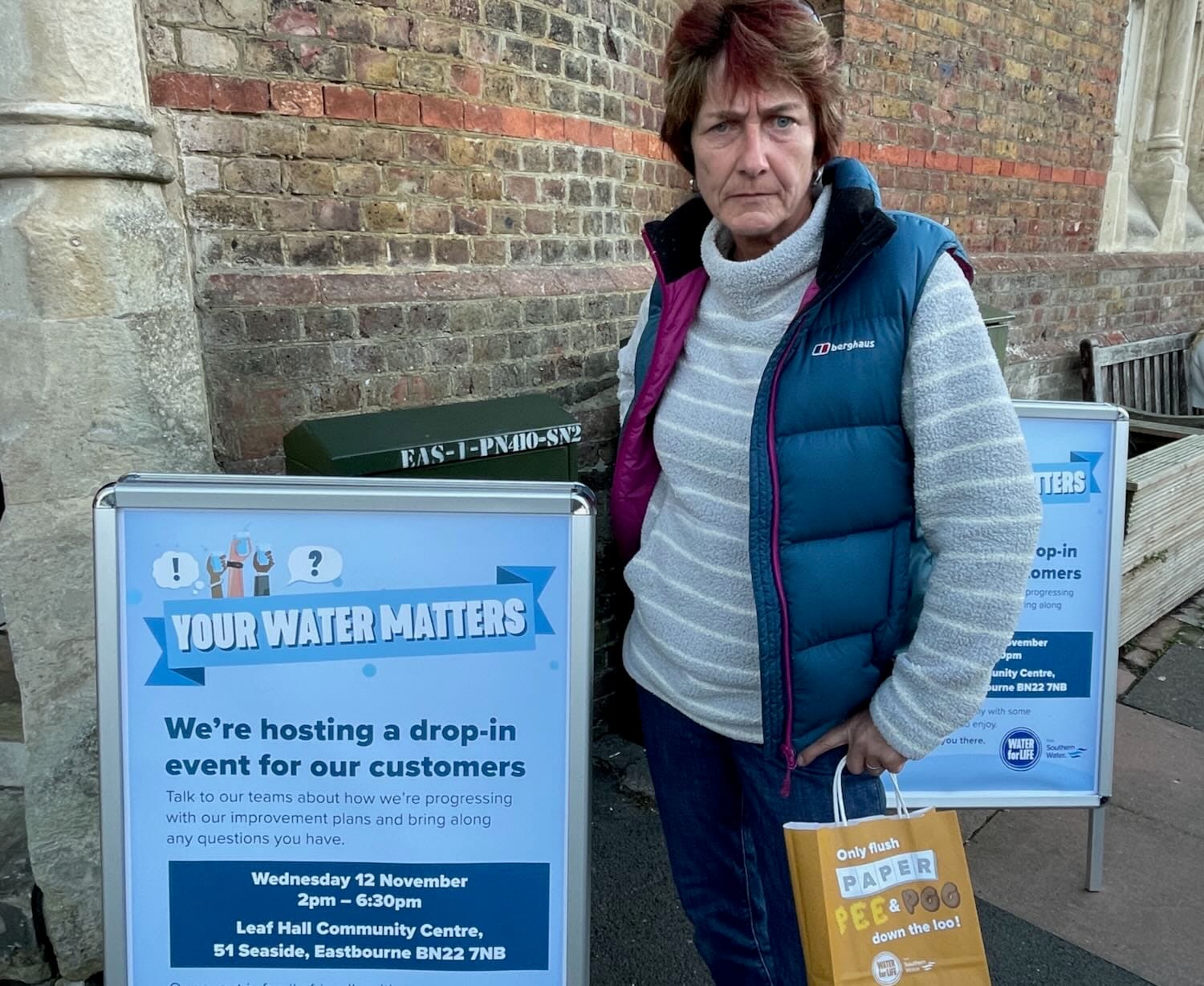
Madeleine spoke with controlled anger: “That is what prompted me to be here today. That was the final straw.
“I believe that is the technical explanation. But why weren’t there sufficient mechanisms in place to properly inspect the facility and take better measures?
“It is now bolting the stable door when the horse is away down the field.
“There seems to be a distinct lack of management and responsibility for safe and clean water in our seas.”
What does Southern Water say about the treatment works?
Mr Penicud told Eastbourne Reporter that the 25-year-old Eastbourne facility is much closer to housing and the seafront than similar facilities and its equipment is underground and difficult to access.
He explained that in the 1990s, laws were implemented to improve urban wastewater treatment. But there were constraints on where the works could be built in Eastbourne, which is why it is sited closer than normal to housing. Engineers at the time also put the equipment underground.
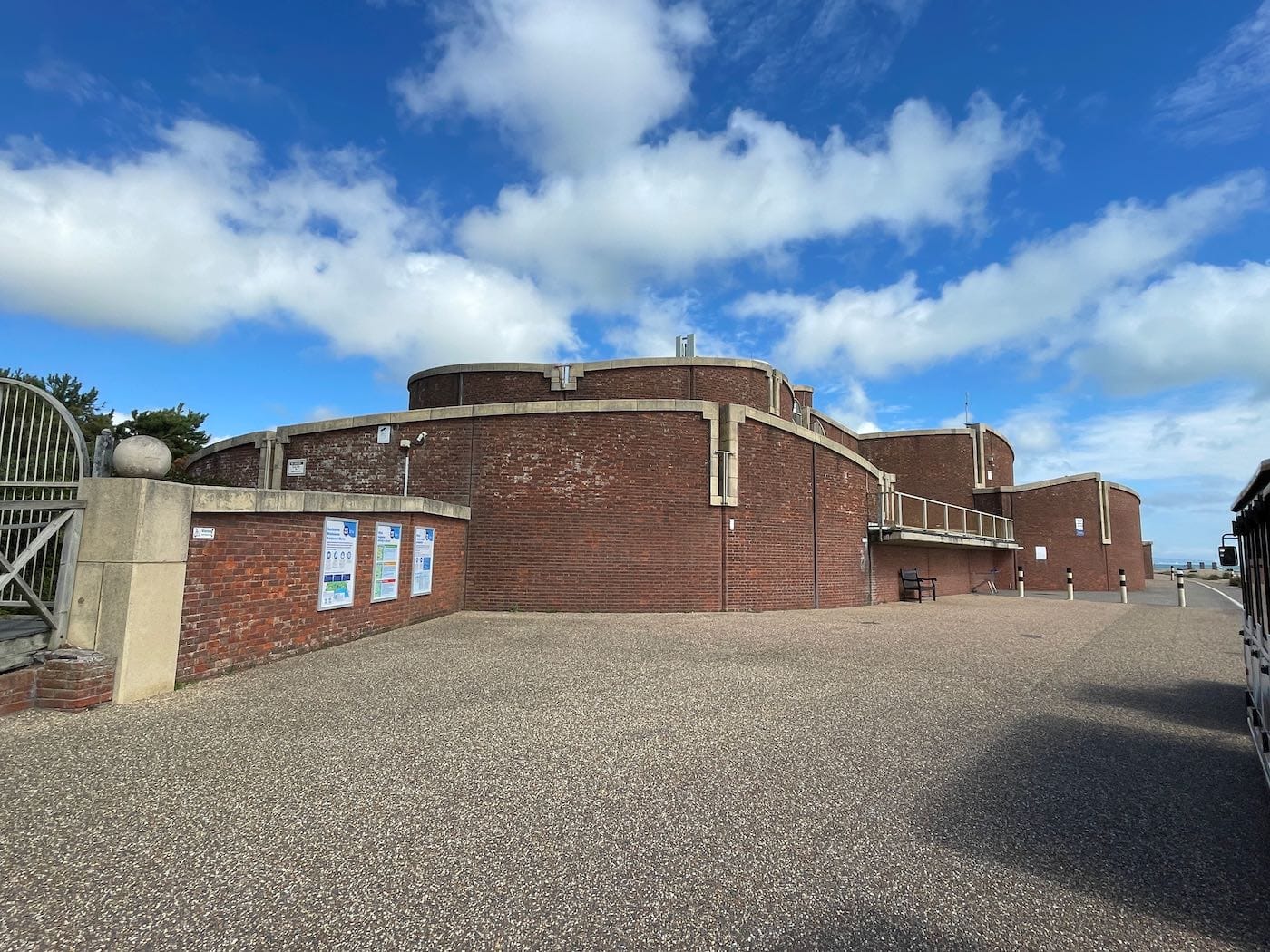
When asked about the maintenance of the works, Mr Penicud said the problems arose more from its history and the geography of the plant rather than its current operation.
He said it would be very costly to move all domestic drainage and build a treatment works elsewhere. There are 65 people working there to maintain the works, many of them around the clock.
:: If you think this type of journalism is better than reading PR handouts presented as ‘news’, please support us – it’s free to read but not free to produce. One-off donations are here or become a member here for the price of a coffee just once a month
